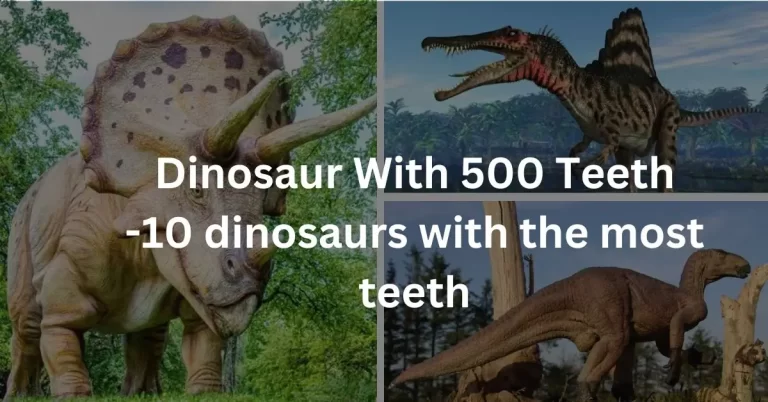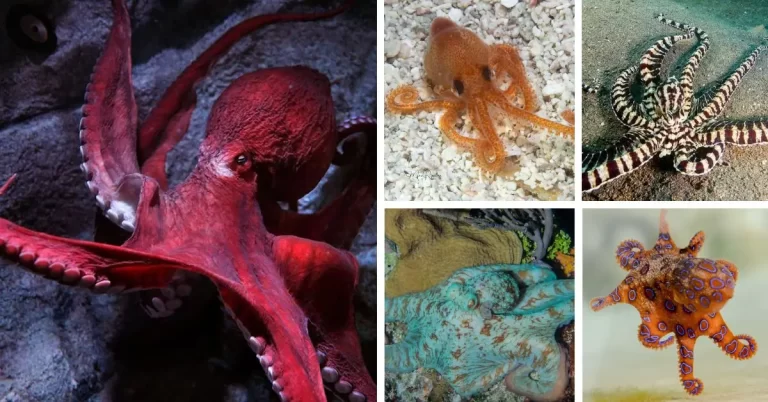Top 10 Fastest Dinosaurs Ever to Exist On Earth
Determining the velocity of a dinosaur as it should be is hard, as it relies upon on a selection of things consisting of size, construct, and environmental situations. From the enduring Velociraptor to the lesser-acknowledged but equally extraordinary Carnotaurus, those dinosaurs had been no longer the most effective good-sized. however, additionally had an amazing potential to navigate their ancient landscapes with extraordinary speed.
As we delve into the past, we can find out the adaptations that allowed those creatures to grasp the chase. However, some dinosaurs are believed to have been particularly fast. Here is a list of 10 dinosaurs that are considered to be among the fastest dinosaurs.
List Of Fastest Dinosaurs
1. Velociraptor
Estimated Speed: 40-45 mph (64-72 km/h)

Velociraptor, one of the most iconic and famous dinosaurs roamed the earth at the end of the Cretaceous, and contrary to its portrayal in the popular media some 71 to 75 million years ago, the Velociraptor is a small, fast dinosaur. The feathered theropod, which measured about 1.6 feet long and 6.8 feet long, belonged to the Dromaeosauridae family.
Velociraptor is said to have been known for their high intelligence and hunting instincts, and each of their hind legs was equipped with a unique spoon-like claw, about 3 inches long This unique spell was internalized is strong plus agility suggests that Velociraptor was skilled hunter.
Its speed has been estimated at 40 to 45 miles per hour, demonstrating its ability to pursue prey rapidly. Its bird-like features, including its light build, long tail, and wings for balance, contribute to the image of a fast and agile hunter.
2. Gallimimus
Estimated Speed: 40-43 mph (64-69 km/h)

Gallimimus, a fast-running dinosaur of the Late Cretaceous period about 70 million years ago, was a graceful member of the ornithomimid family. Resembling a modern ostrich on steroids, Gallimimus stood about 6 feet tall and measured nearly 20 feet in length, making it one of the larger members of its family.
Known for its extraordinary speed, Gallimimus is estimated to have reached speeds of 40 to 43 miles per hour, making it one of the fastest dinosaurs. The long, slender legs and small body were well suited for movement quickly. Galimimus had a beak similar to modern birds, is believed to be an omnivore, and ate a variety of foods that included small vertebrates and plants
This dinosaur gained wide recognition due to its appearance in the movie “Jurassic Park”, where the Gallimimus violent showed their speed and herd behavior Fossil finds in Mongolia, especially the famous “war dinosaur” specimen, have served context value of Gallimimus behavior and anatomy.
3. Struthiomimus
Estimated Speed: 40 mph (64 km/h)

Struthiomimus, the fastest dinosaur in the Jurassic World around 75 million years ago, was a member of the ornithomimid family. Resembling an ostrich in appearance, Struthiomimus was a bipedal dinosaur with a long neck, slender body, and powerful hind limbs. Standing at around 10 feet tall and measuring up to 14 feet in length, it was a swift and agile runner.
The fastest dinosaur known for speed, Struthiomimus is estimated to have reached speeds of approximately 40 miles per hour. Its long, slender legs and lightweight build contributed to its impressive running capabilities. Struthiomimus had a beak adapted for herbivorous or omnivorous feeding habits, suggesting a varied diet that included plants and small prey.
Despite its seemingly delicate frame, Struthiomimus was well-adapted to its environment, demonstrating the diverse adaptations that existed among the dinosaurs of the Late Cretaceous. Fossil discoveries, particularly in North America, have provided valuable insights into the behavior and ecology of this intriguing dinosaur.
4. Dromiceiomimus
Estimated Speed: 40 mph (64 km/h)

Dromiceiomimus, a member of the ornithomimid family that flourished during the Late Cretaceous period about 75 million years ago, was a striking dinosaur characterized by its long legs and fast, agile nature. Similar to an ostrich, it measured about 11 feet in height and about 13 feet in length.
Known for its extraordinary speed, Dromiceiomimus is estimated to have reached speeds of approximately 40 miles per hour. His light body, long legs, and strong tail all contributed to his speed. The proper name “Dromiceiomimus” resembles the modern ostrich, emphasizing its remarkable running ability.
The diet of Dromiceiomimus was probably varied, consisting of plants and small animals. Fossil discoveries in North America, particularly in Alberta, Canada, provided important information on the anatomy and behavior of this dinosaur.
5. Ostrich-mimics (Ornithomimids)
Estimated Speed: 40 mph (64 km/h)

The Ostrich mimics refers to a group of dinosaurs collectively known as ornithomimids, which flourished in the late Cretaceous period. These dinosaurs generally had long legs, small bodies, and fierce facial features compared to modern ostriches. Although several genera of Gallimimus, Struthiomimus, and Dromiseiomimus were in this group, they all shared the same modifications for speed and agility
Ostrich mimics were among the fastest dinosaurs in the world, reaching speeds of 40 miles per hour or more. Their physical features, such as long hind limbs and lean bodies, contributed to their impressive speed. Despite their speed, they must have eaten a variety of foods, from plants to small animals.
These dinosaurs played an important role in Late Cretaceous ecosystems, populating geographical areas as scavengers and possibly as predators. Discoveries in places like Mongolia and North America have provided valuable information about their behavior, physiology, and role in the ancient ecosystems in which they lived.
6. Tyrannosaurus rex
Estimated Speed: 20 mph (32 km/h)

Tyrannosaurus rex, often referred to as T. rex, is one of the most iconic and well-known dinosaurs that roamed the Earth approximately 66 to 68 million years ago during the Late Cretaceous period. Renowned for its massive size, powerful jaws, and tiny, seemingly vestigial arms, T. rex was an apex predator in its ecosystem.
With an estimated length of up to 40 feet and standing about 15 feet tall, T. rex was an imposing figure. Despite its size, it wasn’t as fast as some smaller theropods, with an estimated top speed of around 20 mph. But it has been a formidable hunter, compensating for its lack of speed with impressive touch and sharp scent.
Fossils of T. Rex have been determined in North America, in particular in places like Montana and South Dakota, imparting researchers with precious statistics about its anatomy, conduct, and position in Late Cretaceous ecosystems.
7. Allosaurus
Estimated Speed: 21 mph (34 km/h)

Allosaurus, a formidable theropod dinosaur from the late Jurassic period 155 to 150 million years ago, was primarily a predator in its ecosystem Because of its large size, snout, and strong teeth, Allosaurus was a superior carnivore, catching up with her herbivorous dinosaurs.
Measuring up to 30 feet in length, Allosaurus had a robust and muscular build. Although not as fast as some smaller theropods, it was an agile and efficient hunter, likely reaching speeds around 21 mph. Its long legs and strong tail aided in maintaining balance during pursuit.
Allosaurus fossils have been found in North America, Europe, and Africa, and make important contributions to our understanding of Jurassic ecosystems. Its coexistence with other large predators like Stegosaurus and Apatosaurus is inferred from fossil evidence, reflecting a close relationship between predators and predators in this archaic period.
8. Carnotaurus
Estimated Speed: 20-25 mph (32-40 km/h)

Carnotaurus, a common theropod dinosaur from the Late Cretaceous Period about 70 million years ago, stands out for its unique anatomical features. Found in South America, the fastest carnivorous dinosaur had a deep skull, and short arms, and was prominent with prominent horns in its eyes.
At about 26 feet long, Carnotaurus was small but mighty. One of its most notable characteristics is its speed, which is estimated to be between 20 and 25 miles per hour. Its agility and adaptability to prey, including its sharp teeth and powerful jaws, have made it an ecologically effective hunter.
Carnotaurus, meaning “meat-eating bull,” reflects its bull-like appearance and predatory nature. Fossil discoveries in Argentina, including a well-preserved skull. Despite its relatively short arms, Carnotaurus displays the diverse adaptations that existed among theropod dinosaurs during the Late Cretaceous.
9. Deinonychus
Estimated Speed: 30 mph (48 km/h)

Deinonychus, a formidable Early Cretaceous dinosaur from 115 to 108 million years ago, is a member of the dromaeosaurid family and is known for playing a pivotal role in revolutionizing our understanding of theropod behavior. Resembling a smaller version of its relative, Velociraptor, Deinonychus stood about 5 feet tall and measured around 11 feet in length.
Known for its remarkable speed and agility, Deinonychus could reach speeds up to 30 mph. Its slender build, long legs, and the infamous sickle-shaped claws on each foot made it a formidable predator. Deinonychus is notable for its potential pack-hunting behavior.
Fossils from North America, particularly Montana, have provided important information on the life behavior and physiology of Deinonychus, contributing significantly to our understanding of Early Cretaceous dinosaur biology and evolution.
10. Dilophosaurus
Estimated Speed: 20 mph (32 km/h)

Dilophosaurus, a unique dinosaur from the Early Jurassic period around 193 million years ago, is known for its distinct double crests on its skull. Standing around 20 feet in length, Dilophosaurus had a slender build and was a carnivorous theropod.
While often portrayed with venomous spit in popular culture, there is no direct evidence supporting this feature in the fossil record. Dilophosaurus likely relied on its sharp teeth and agility for hunting. Estimates suggest it could reach speeds of about 20 mph, making it a relatively fast and effective predator.
Fossil discoveries in Arizona revealed Dilophosaurus tracks, shedding light on its locomotion and behavior. Though not fully understood, the crests on its head were likely used for display and communication within the species. Dilophosaurus represents an intriguing chapter in the early evolution of theropod dinosaurs, offering insights into the diversity of life during the Jurassic period.
.
Read Also:
- Meet The 10 Flying Dinosaurs In Jurassic World
- Top 10 Biggest Sea Dinosaurs that ever lived on Earth
- Dinosaur With 500 Teeth -10 Dinosaurs With The Most Teeth






